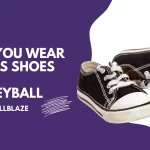There is nothing more exciting than watching or playing volleyball. There are multiple decisions to make in split seconds, and it is very physically demanding. Beaches, backyards, and even school gyms come to mind when we think of volleyball.
Sand and grass aren’t the only surfaces that can be used for outdoor volleyball courts. No matter what the terrain is, volleyball courts can be constructed with modern materials and construction techniques.
Depending on the type of material used, the size and any special features or accessories, the average cost of installing an outdoor volleyball court ranges from $22,000 – $119,000 in the US.
This article will help you determine which type of outdoor volleyball court is best for your needs by breaking down the major Outdoor Volleyball Court Cost factors associated with it.
How does the Installation of Outdoor Volleyball Court Cost vary?

Building a new volleyball court for your outdoor recreation area can be both fun and rewarding. In order to ensure years of volleyball enjoyment, it is essential to choose the right court material, size, and layout.
There are a lot of options, so understanding where to begin can be difficult.
Let’s get started.
Preparation of the land and site
As the first step towards installing your volleyball court, you must prepare the site.
As part of this process, the ground will be excavated, leveled, and any drainage that is needed will be installed. Your property’s size and condition will determine the cost of this work. It is also important to take into account your specific location when determining labor and materials costs.
Base layer and drainage
Outdoor sports courts, especially volleyball courts, require a good drainage system and base layer.
You can prevent water damage to your court by providing proper drainage, which ensures a constant, dry playing surface for your players.
You will have a more stable and even playing surface if you use a good base layer. Keeping your volleyball court safe starts with a well-constructed base layer. Minimizing the risk of injury is a priority in any sport.
The subflooring system
Choosing a subflooring system is the next step. Support and stability are provided by the subfloor, which sits beneath your playing surface.
Each type of subflooring system has its own benefits, and there are many available on the market.
Volleyball courts are expensive to build, as well as difficult to install. Among the most common types are:
Concrete & Asphalt
Concrete and asphalt are two of the most common subflooring materials. However, they can be difficult to maintain in some climates due to their low cost of installation. Those materials might not do well in locations with extreme temperature swings and heavy moisture.
The compacted base
In commercial and institutional volleyball court installations, compacted bases are often used as subflooring. Gravel and sand are compacted to form the layer.
The durability of this type of subflooring makes it ideal for high-traffic areas.
Shock Pad System with Modular Design
A modular shock pad system is one of the safest subfloors for volleyball courts.
Subflooring made up of interlocking tiles or mats is a type of subflooring that sits over a base layer. Providing a cushioned surface, they reduce the risk of injury and are easy on the joints.
Overlaying an existing base layer
You can save some money if you install the volleyball court over your current base layer if you’re converting an existing court into one.
A volleyball court adds a considerable amount of weight, so it’s important that your current base layer can support it.
Before proceeding, consult with a professional if you’re unsure.
You may enjoy reading Best Volleyball Positions For Short Players
Material choice for court surfaces

Acrylic court surface for all weather
Acrylic and rubber are the main components of these modern materials. Among all the materials used for court surfaces, these have the best bounce and feel. In addition to their toughness, they can withstand a lot of use and abuse.
Multi-purpose modular sport tiles
As with the base layer we discussed earlier, you can also choose modular tiles. When an individual tile becomes damaged, you can more easily replace it because of its modular design.
Synthetic turf for multi-purposes
Multi-sports and activities can be accommodated with artificial turf. In order to determine the right surface for your court, you need to know what your use case is.
Base Mat
An option like this can be found on a running track. This material is extremely strong and durable because it is bound with polyurethane. As a result of its ease of maintenance and consistency, this type of court surface is very popular.
Polyurethane Sport Floor
A polyurethane sports floor is the next option. Based on a porous layer of material coated in a texture spray, this mat is constructed. Your outdoor volleyball court will benefit greatly from polyurethane sports floors.
Surface size of the playing field
The next step is to determine the size of your court based on the materials you chose earlier. You will need a court that is the right size based on the level of play and the age of your athletes.
In contrast, an outdoor volleyball court measures 59 feet by 29 feet
Beach volleyball-style games and 6 on 6 play are both possible with this size.
You should always seek professional advice if you’re uncertain about the size to choose.
You may enjoy reading Taller vs. Shorter Setters In Volleyball
Using modular sports court tiles has many benefits

You might want to consider modular court tiles as the playing surface material for your school or commercial sports facility if you plan to install a sports court.
These PVC modular tiles have a very high performance when considering safety, playability, and aesthetics for your sports court.
Injuries can be reduced by their anti-slip and bounce properties. The second reason is that they are equally effective when playing basketball or soccer. As for the design of your sports court, you have a lot of options. A court can be customized to suit your brand, team or school by mixing and matching different colors of tiles.
Installing, dismantling, and transporting modular court tiles reduces labor costs, which makes them very cost-effective.
Find out how much a modular sports court tile floor will cost for your sports facility using our outdoor sports flooring cost calculator.
Customization
New courts have the advantage of being customized to fit the needs of the customer.
Regardless of the city, organization, or brand you represent, everything from the lines to the court itself can be customized. You must choose which customizations are most important to you, as each comes with a price tag.
It is even possible to include logos to strengthen your branding.
You may enjoy reading Beach Volleyball Near Me
The accessories
Your court will need some accessories to be able to play once it has been installed.
In addition to the volleyball net, sleeves, and poles, volleyball accessories are also important.
The new outdoor volleyball court will not be usable without them. Your court will last for years if you choose a durable and weather-resistant net.
It’s also important to have a sufficient supply of balls for your athletes. A court may need multiple sets of balls depending on how often it is used.
Amenities

Roof / Sports Air Dome
Consider a roof or sports air dome to provide athletes with a safe space regardless of the season. You will be able to use your court all year round by protecting it from the elements.
Scoreboard with LEDs
Keep track of your points with a scoreboard and make your game more exciting. These can be mounted on a wall or freestanding and come in different sizes.
Bleachers
It is essential to add bleachers or seating to your area if you want to make it spectator-friendly. As a result, your fans will be able to cheer on your athletes and watch the game comfortably.
Fencing
Having a fence around your court creates a sense of safety for spectators and players. As well as keeping balls within the playing area, it provides a barrier to prevent them from escaping.
Lighting
Lighting your volleyball court with LEDs is a great option. Traditional light bulbs don’t last as long as LEDs, but they’re more energy-efficient.
Windscreens
You can reduce the amount of wind entering your court with windscreens if you live in a windy area. In this way, the game will remain fair and no objects will be thrown onto the playing field.
You may enjoy reading Unsung Hero Of Volleyball Court
What are the methods of financing an outdoor volleyball installation project?

Private Investors
If you are looking for private investors to fund your project, you can also do so. It could be an individual, a business, or even a foundation.
Funds for loans
Public projects are often financed by banks and credit unions. If you can repay the loan and have a solid plan in place, this might be an option you wish to consider.
Funds for grants
A volleyball court, for example, could be funded by several grant-making organizations. Even underserved communities can apply for grants offered by the US government.
Fundraising through crowdsourcing
A crowdfunding campaign is another way to raise funds. Individuals or groups can donate through this method.
The ease of setting up and accepting donations on many online platforms makes it easy to start a campaign.
Conclusion
The cost of a volleyball court can vary depending on various factors like the size, the materials used, the location, and the additional features included. In addition to site preparation, equipment, installation, and maintenance expenses, there are other expenses as well.
In order to ensure that your volleyball court meets your needs and fits within your budget, it is important to consider these factors and budget accordingly.
It is important to invest in a well-built and maintained volleyball court, whether it is for personal use or as part of a community or sports facility, to make the sport enjoyable for years to come.
You may enjoy reading How Big is a Beach Volleyball Court?





